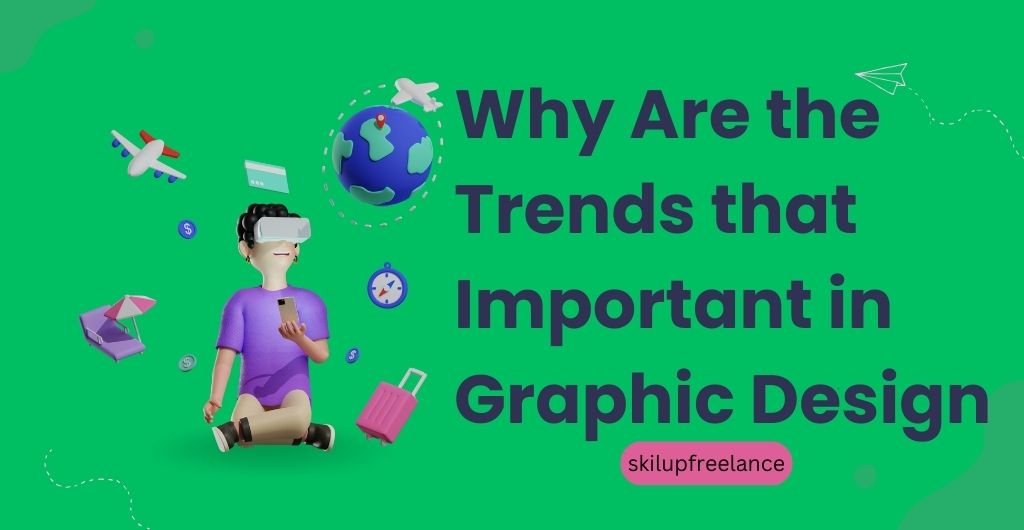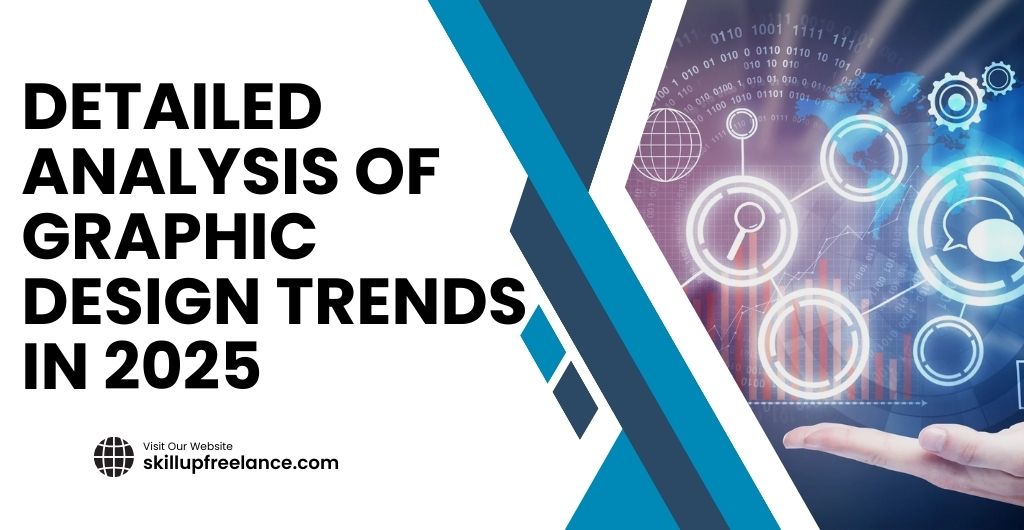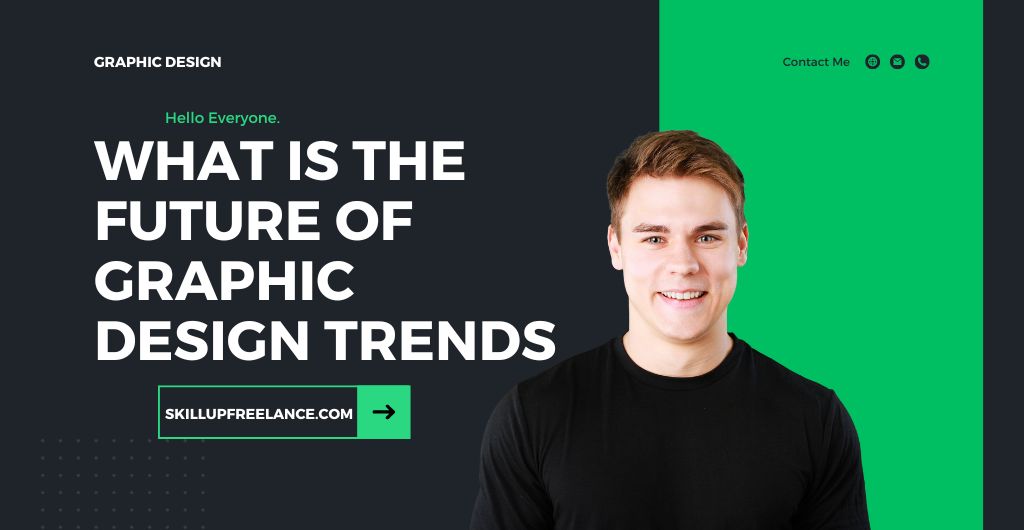Why Are Trends Important in Graphic Design? Understanding Their Impact and Benefits for Designers in 2025
In today’s fast-paced world, graphic design has become a critical component of brand identity, communication, and user experience. Staying updated with the latest design trends is essential for staying relevant in the industry. This article will explore the significance of graphic design trends in 2025, the key areas where these trends are making a difference, and how designers and agencies can harness them to create innovative, effective designs.
Introduction to Graphic Design Trends
Graphic design trends evolve with time, blending influences from past movements with modern advancements in technology and culture. In 2025, these trends reflect the latest shifts in consumer behavior, technological innovation, and cultural movements. As a designer, understanding these trends is crucial to creating contemporary, engaging designs that resonate with your target audience.
Why is it crucial to stay current with trends?
Graphic design trends help designers create visually appealing and meaningful content that connects with people on a deeper level. By embracing trends, designers are able to craft designs that reflect the current times and stay relevant to their audience. Staying updated ensures that your designs are fresh, impactful, and in line with what is currently captivating the market.

Key Insights for Designers and Agencies
1. Why Understanding Trends Matters
Helps in creating designs that resonate with the target audience: Trends are often a reflection of the tastes, preferences, and attitudes of the current generation. By understanding and using trends, designers can connect emotionally with their audience, creating a lasting impression.
Provides a competitive edge: As competition in the graphic design industry grows, being able to deliver trendy solutions gives designers a competitive advantage. A design that feels modern and relevant is more likely to grab attention and drive results.
Improves brand communication: Trendy designs are not just visually appealing; they are effective in conveying the right message. In today’s world, design is a form of communication, and trends ensure that brands are speaking the same visual language as their audience.
2. Balancing Trends and Client Needs
While trends are important, designers must be cautious not to overdo them. Clients often want solutions that are practical and functional rather than following every single design trend. The key lies in finding the balance between incorporating trendy elements and meeting the specific needs of the brand or client.
- Blend trendy elements with functional design: Incorporate trends that elevate the user experience while ensuring the design serves its intended purpose.
- Customize trends to suit the industry and brand identity: Not all trends are suitable for every brand. Designers should select trends that align with the brand’s core values and message.
| Key Insights for Designers and Agencies | |
|---|---|
| Why Understanding Trends Matters |
|
| Balancing Trends and Client Needs |
|
Main Fields of Latest Trends in Graphic Design
1. Responsive Logo Designs
With the rise of digital platforms, logos must be scalable and adaptable. Responsive logos adjust their size, complexity, and design based on the platform, ensuring that they always look great whether they are displayed on a website, mobile app, or billboard. Designers must create logos that maintain their identity and readability across various mediums, from small mobile screens to large posters.
2. Bold Typography
Typography continues to evolve with the introduction of oversized and experimental fonts. Bold typography captures attention, making it an ideal tool for modern branding and advertising. Designers are using striking fonts in combination with clean, minimalistic layouts to create a strong visual impact without sacrificing readability.
3. Abstract Designs
Abstract designs break away from realism and explore more imaginative, unconventional forms. Designers are using surrealism, artistic freedom, and conceptual graphics to evoke emotions and convey deeper meanings. Abstract designs create an emotional connection with the audience and are often used in high-end branding, art, and innovative product designs.
4. Animation and GIFs
Animations and GIFs are becoming integral to digital design, adding interactivity and engagement. From subtle hover effects to full-scale animated videos, animations breathe life into static designs. These dynamic elements are especially effective on websites, social media platforms, and in digital advertising, as they captivate viewers and hold their attention longer.
5. Dynamic Duotones
Duotones, the use of two contrasting colors in a design, have gained popularity for adding depth and vibrancy. This technique is widely used in modern graphics to make images and backgrounds more dynamic. By carefully selecting color combinations that complement each other, duotones can create striking, attention-grabbing visuals.
6. Gradients
Once considered outdated, gradients are making a strong comeback in 2025. The transition from flat designs to dynamic gradient effects provides a modern, visually rich appearance. Gradients can be layered to create depth and dimension, making them ideal for backgrounds, buttons, and icons.
7. Geometric Patterns
Clean, symmetrical geometric patterns are another significant trend in graphic design. These patterns provide structure and a sense of order, which works well in a wide variety of industries. When combined with other elements like gradients and duotones, geometric patterns can produce stunning, modern visuals.

Trendy Designs for Various Industries
Each industry has adopted graphic design trends to create designs that align with their unique needs and customer expectations. Here’s a breakdown of how different industries are using trends in 2025:
Entertainment:
Entertainment brands tend to use bold, experimental designs that are attention-grabbing and visually striking. Bright colors, abstract forms, and animations are used to create an exciting atmosphere that draws people in.
Healthcare/Pharma:
For healthcare and pharmaceutical brands, minimalist yet vibrant designs help convey trust, professionalism, and innovation. Soft gradients and clean typography are used to communicate reliability and expertise.
Finance:
In the finance sector, geometric designs and structured visuals are favored to evoke stability and security. Clean, symmetrical layouts reflect the need for trust and dependability.
E-commerce:
E-commerce brands use animated and dynamic designs to enhance user experience, making online shopping more engaging. Responsive logos, smooth transitions, and interactive elements encourage conversions and improve customer satisfaction.
Technology:
Tech companies often embrace futuristic and abstract design elements to symbolize innovation. Geometric shapes, gradients, and 3D effects are commonly used to showcase cutting-edge products and services.
| Industry | Design Trend |
|---|---|
| Entertainment | Bold, experimental, animated designs. |
| Healthcare/Pharma | Minimalist, vibrant, clean typography. |
| Finance | Geometric, structured visuals for trust. |
| E-commerce | Dynamic, interactive, responsive designs. |
| Technology | Futuristic, geometric, 3D effects. |
Detailed Analysis of Graphic Design Trends in 2025
1. Visual Treats
Symmetry and Asymmetry: By leveraging symmetry, designers create a sense of harmony and balance. On the other hand, asymmetry can introduce intrigue and uniqueness, making the design stand out from the conventional.
Unexpected Elements: Breaking from traditional design expectations and incorporating surprise elements can captivate the audience’s attention and make the design more memorable.
2. Colour Themes
Vibrant Shades: Bold, vibrant colors are dominating the design scene. These bright hues are used to evoke energy, enthusiasm, and attention, making them perfect for brands looking to make a statement.
Neon and Metallic: Neon and metallic colors are gaining popularity in designs aimed at a futuristic or technological feel. These colors help create a sense of innovation and modernity.
Muted Pastels: Soft pastel colors are often used in designs where subtlety and calm are needed. These tones provide a soothing effect and are used in industries like wellness and beauty.
3. Sustainability-Inspired Designs
As eco-consciousness grows globally, many brands are embracing sustainability-inspired designs to reflect their commitment to environmental responsibility. These designs not only resonate with environmentally aware consumers but also help build trust and loyalty by aligning with ethical values.
Key Elements of Sustainability-Inspired Designs
- Earthy Tones
- Use of natural colors like greens, browns, tans, and muted blues to evoke a sense of harmony with nature.
- Examples:
- Starbucks uses earthy greens and browns in its branding to reflect its focus on sustainability and ethically sourced products.
- Patagonia integrates muted, nature-inspired tones in its campaigns to emphasize environmental preservation.
- Natural Textures
- Incorporation of textures resembling wood, stone, paper, or fabric to mimic natural elements.
- Examples:
- Packaging designs made with unbleached kraft paper or jute material.
- Website backgrounds featuring subtle, organic textures like tree bark or sand.
- Organic Shapes
- Use of flowing, asymmetrical forms that mimic the irregularity found in nature.
- Examples:
- Logos and icons with soft, curving edges (e.g., Ecover’s logo inspired by a leaf).
- Layout designs that avoid rigid grids in favor of fluid, freeform arrangements.
Eco-Conscious Practices in Graphic Design
- Using Recycled and Sustainable Materials
- Opting for materials like recycled paper, biodegradable inks, and reusable packaging.
- Example: Lush Cosmetics uses 100% recycled materials for its product packaging.
- Minimizing Waste
- Reducing excess by designing minimalist layouts and eco-friendly packaging.
- Example: Apple’s packaging redesign reduced material use and emphasized recyclability.
- Digital-First Approach
- Prioritizing digital campaigns over print to reduce the environmental impact of physical materials.
- Example: Brands like IKEA increasingly focus on digital catalogs instead of printed versions.
- Sustainable Typography and Printing
- Using fonts designed to minimize ink usage (e.g., Ecofont).
- Employing sustainable printing methods like waterless printing or soy-based inks.
Inspiration for Designers
- Nature-Inspired Branding
- Look to natural environments for inspiration—trees, mountains, oceans, and wildlife.
- Example: The logo for WWF (World Wildlife Fund) uses a panda, reflecting conservation values.
- Collaborations with Eco-Friendly Suppliers
- Partner with suppliers who specialize in sustainable materials and processes.
- Educational Campaigns
- Creating designs that educate consumers about environmental issues, like recycling guides or sustainability tips.
Why Sustainability Matters in Design
Incorporating eco-conscious elements into designs is more than a trend—it’s a reflection of a brand’s values and a response to consumer demand. By adopting these practices, designers contribute to a larger global movement toward sustainability while creating visually appealing and meaningful work that resonates with modern audiences.
4. 3D and Immersive Elements
3D visuals and augmented reality (AR) elements are being used to create more interactive, immersive experiences. By blending flat and 3D designs, companies can create fresh, engaging visuals that draw the viewer’s eye and encourage deeper interaction with the content.
| Trend Category | Details |
|---|---|
| Visual Treats | Symmetry vs. Asymmetry, Unexpected Elements. |
| Colour Themes | Vibrant Shades, Neon/Metallic, Muted Pastels. |
| Sustainability-Inspired Designs | Earthy Tones, Natural Textures, Organic Shapes. |
| Eco-Conscious Practices | Recycled Materials, Minimized Waste, Digital-first Approach. |
| Inspiration for Designers | Nature-Inspired Branding, Eco-friendly Suppliers, Educational Campaigns. |
| 3D & Immersive Elements | Interactive, Augmented Reality, 3D Visuals. |
Immersive Experiences, Augmented Reality (AR), and Virtual Reality (VR) in Graphic Design
As we look ahead to the future of graphic design, one of the most exciting developments is the potential for immersive experiences, augmented reality (AR), and virtual reality (VR) to revolutionize the field. These technologies are already transforming how designers approach creative solutions, offering entirely new ways to engage audiences and create innovative visuals.
Immersive Experiences:
Immersive design goes beyond traditional visual elements, allowing users to interact with and experience designs in a more hands-on, sensory way. With advancements in AR and VR, designers can now create environments where users can feel like they are physically inside the design itself. This can be used in various applications, such as virtual product demonstrations, interactive storytelling, or immersive brand experiences. Immersive experiences are particularly important for industries such as entertainment, gaming, education, and retail.
Augmented Reality (AR) in Design:
AR overlays digital elements onto the real world through smartphones, tablets, or AR glasses. This technology allows designers to create interactive experiences that blend the digital and physical worlds seamlessly. For example, brands can use AR to allow users to visualize products in their environment before making a purchase, or museums can incorporate AR into exhibits to provide additional context and information. AR is expected to be a major tool in graphic design, especially for mobile and web experiences.
Virtual Reality (VR) in Design:
Unlike AR, which enhances the real world, VR creates entirely digital environments that users can explore. VR offers endless possibilities for designers to create fully immersive worlds for entertainment, education, training, and more. In design, VR can be used for virtual prototypes, interactive design walkthroughs, or creating immersive 3D environments. It allows designers to push the boundaries of visual storytelling and user experience in ways that traditional design tools cannot.

The Future of Graphic Design: Blending Reality and Imagination
The integration of AR and VR into graphic design marks a turning point in how designers create and communicate ideas. As technology continues to evolve, the lines between the digital and physical worlds will become even more blurred, offering exciting new possibilities for creativity, engagement, and user experience. Graphic designers who adapt to these immersive technologies will be able to stay ahead of the curve and lead the way in creating truly revolutionary experiences for their audiences.
Practical Applications and Tips for Adopting Graphic Design Trends
1. Adopting Trends Thoughtfully
When applying trends, it’s important to be selective. Always consider the target audience and ensure the trend aligns with the brand’s values and message. Overloading a design with trendy elements can detract from its purpose.
2. Recommended Tools for Trendy Designs
- Responsive Logos: Use Adobe Illustrator or Figma for designing scalable, adaptable logos.
- Gradients: Try tools like Gradient Hunt and Coolors to experiment with color schemes and gradients.
- Animations: For creating animations and GIFs, Adobe After Effects and LottieFiles are highly recommended.
3. Staying Updated
To stay current with design trends, follow platforms like Dribbble, Behance, and Pinterest. These platforms offer daily inspiration and insight into emerging trends in the design world.
FAQs
1. Why is it important to stay updated with graphic design trends?
Staying updated ensures that your designs remain relevant, modern, and resonate with your audience. It helps brands communicate their messages more effectively and stand out in a competitive market.
2. What are the top graphic design trends for 2025?
Key trends for 2024 include responsive logo designs, bold typography, abstract patterns, duotones, gradients, and animation.
3. How can I incorporate trends without losing my brand identity?
Use trends selectively and make sure they align with your brand’s values and identity. Avoid overloading designs with too many trendy elements.
4. What tools are recommended for designing trendy graphics?
Popular tools include Adobe Illustrator, Figma, Gradient Hunt, Coolors, Adobe After Effects, and LottieFiles.
Conclusion
Understanding and applying the latest graphic design trends is essential for staying relevant and competitive in the ever-evolving design world. By balancing creativity with functionality, designers can produce future-proof, impactful designs that meet both modern design standards and client needs. Staying up-to-date with trends ensures that your designs remain fresh and engaging, helping to captivate audiences and deliver meaningful brand communication. You also do freelancing to find graphic design work.